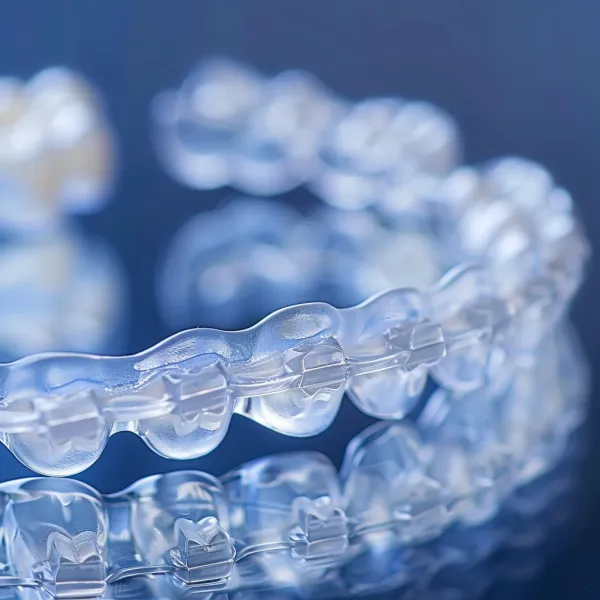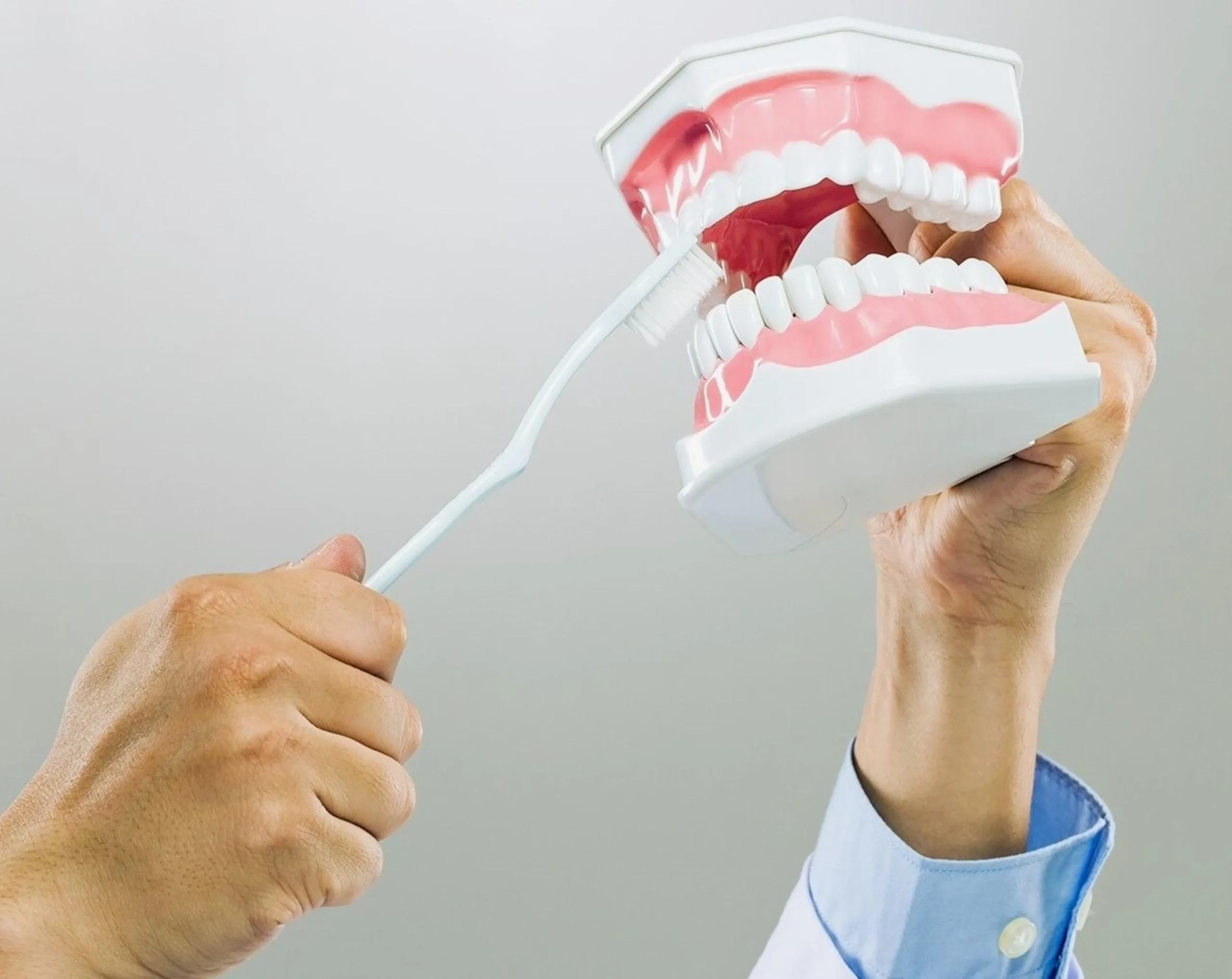Invisalign with attachments is a popular orthodontic treatment that can help straighten teeth and improve overall dental health. Invisalign attachments are small, tooth-colored bumps that are attached to the teeth to help guide the aligners into the correct position. These attachments can be used to address more complex tooth movements and hold the aligners in place more securely.
The process of getting Invisalign with attachments typically involves several steps. First, the orthodontist will take impressions of the patient’s teeth and create a customized treatment plan. Next, the attachments will be bonded to the teeth using a special dental adhesive. The patient will then wear the aligners for a specified period of time, typically around 22 hours per day, and return to the orthodontist for periodic check-ups and adjustments. With proper care and maintenance, Invisalign with attachments can help patients achieve a straighter, healthier smile.
What are Invisalign Attachments?
Invisalign attachments, also known as buttons, are small tooth-colored bumps that are attached to specific teeth to help the aligners apply the right amount of force to move teeth into their proper positions. They are made of a tooth-colored composite resin and are barely noticeable.
Function of Invisalign Attachments
Invisalign attachments are used to help achieve more complex tooth movement. They provide additional force to shift teeth in more precise ways, making the treatment more personalized, efficient, and accurate. Attachments can be used to help the aligners treat more severe orthodontic cases. They also hold the aligner in place more securely, making it less likely to slip or move around.
Types of Invisalign Attachments
There are several types of Invisalign attachments, each serving a different purpose. The most common types include:
- Rectangular attachments: used to apply force to a specific tooth to move it in a particular direction.
- Square attachments: used to help rotate teeth.
- C-shaped attachments: used to help close gaps between teeth.
- L-shaped attachments: used to help move teeth vertically.
The type and placement of attachments are determined by the orthodontist based on the patient’s specific needs and treatment plan.
Invisalign attachments are an essential part of the Invisalign treatment process. They help the aligners apply the right amount of force to move teeth into their proper positions, making the treatment more personalized, efficient, and accurate.
Why are Invisalign Attachments Necessary?
Invisalign attachments, also known as buttons, are small tooth-colored bumps that are attached to the teeth to help with the movement of teeth during Invisalign treatment. They are made of a tooth-colored composite material that blends in with the natural color of the teeth.
Importance of Invisalign Attachments
Invisalign attachments are necessary because they provide additional grip and pressure to certain teeth that need to be moved during treatment. They help the aligners to fit more snugly and securely, which in turn helps to achieve more precise and accurate tooth movement.
Without attachments, certain teeth may not move as effectively or efficiently as they should, which can prolong treatment time and result in less desirable outcomes. Invisalign attachments are particularly important for more complex cases of misalignment, such as severe crowding or malocclusion.
Reasons for Invisalign Attachments
There are several reasons why Invisalign attachments may be necessary during treatment. These include:
- Achieving more precise tooth movement: Invisalign attachments can be used to accomplish specific movements that are difficult for aligners on their own. They can help to rotate teeth, move them vertically or horizontally, and close gaps between teeth.
- Speeding up treatment time: By applying extra pressure, attachments may speed up the treatment process. This can be especially beneficial for patients who want to achieve their desired results in a shorter amount of time.
- Addressing more severe misalignment: Invisalign typically works better on teeth with mild to moderate crowding or crookedness. Aligner attachments can provide additional power to move teeth with more serious misalignment issues.
Invisalign attachments are an essential part of Invisalign treatment, and they can help to ensure that patients achieve the best possible results. While they may not be necessary for every case, they can be a valuable tool for achieving precise and efficient tooth movement.
How Do Invisalign Attachments Work?
Invisalign attachments are small tooth-colored dots made of composite resin that are attached to the surface of your teeth to work with your aligners. These attachments help your aligners get a better grip on the tooth and apply more pressure to move it in the right direction.
Placement of Invisalign Attachments
Invisalign attachments are placed on specific teeth by your dentist, who will determine the best location for them based on your treatment plan. The attachments are placed directly onto the tooth surface under the aligners, and they are barely noticeable.
Function of Invisalign Buttons
Invisalign buttons, also known as SmartForce attachments, are a type of attachment that acts as an anchor or handle for the aligner. They give Invisalign a better grip on specific teeth, making it easier to move them in the desired direction.
Invisalign buttons are made of tooth-colored composite resin, just like regular attachments. They are placed on specific teeth that are difficult to move due to their angle, size, or shape. The buttons are slightly larger than regular attachments and have a more pronounced shape to help the aligner grip onto them.
In conclusion, Invisalign attachments and buttons are an essential part of the Invisalign treatment process. They help the aligner move your teeth in the right direction and achieve the desired results. By working with your dentist to determine the best location for attachments and buttons, you can ensure that your Invisalign treatment is successful.
Do You Need Invisalign Attachments?
Invisalign attachments are small, tooth-colored bumps that are placed on certain teeth to help the aligners grip the teeth better and move them more effectively. Not everyone who undergoes Invisalign treatment needs attachments. Here are some factors to consider:
When Invisalign Attachments are Required
Your orthodontist will determine whether or not you need attachments during your Invisalign treatment. Generally, attachments are necessary when:
- Your teeth have certain shapes or angles that make them difficult to move with the aligners alone
- You have certain types of bite issues, such as overbites or underbites
- Your teeth require significant rotation or movement
If your orthodontist determines that you need attachments, they will place them on your teeth at the beginning of your treatment. The attachments are removed at the end of your treatment, along with the aligners.
Invisalign Without Attachments
If your teeth are relatively straight and your bite is not severely misaligned, you may be able to undergo Invisalign treatment without attachments. Invisalign without attachments can be just as effective as treatment with attachments, as long as your orthodontist determines that your teeth are suitable for this type of treatment.
Invisalign without attachments may be a good option for people who are concerned about the appearance of their aligners. Without attachments, the aligners are less noticeable and may be more aesthetically pleasing.
However, it is important to note that not everyone is a good candidate for Invisalign without attachments. Your orthodontist will determine whether or not you need attachments based on your specific dental needs.
In conclusion, whether or not you need Invisalign attachments depends on your individual dental needs. Your orthodontist will determine whether or not you need attachments based on factors such as your teeth’s shape, angle, and bite issues. Invisalign without attachments can be just as effective as treatment with attachments, but it is important to consult with your orthodontist to determine the best treatment plan for your individual needs.
How Many Invisalign Attachments Do You Need?
The number of Invisalign attachments required varies from patient to patient and depends on the severity of the misalignment. The dentist will determine the number of attachments needed during the initial consultation and examination.
In general, patients require between four to twenty attachments on their top and bottom teeth. The size of the attachments depends on the size of the teeth and the amount of movement required.
The attachments are usually small, tooth-colored bumps that are attached to the teeth with dental adhesive. They are made of a tooth-colored composite material and are barely noticeable. The size of the attachments can range from 1mm to 3mm in diameter and 1mm to 2mm in height.
The dentist will strategically place the attachments on the teeth to provide the necessary pressure to move the teeth into the desired position. The attachments work in conjunction with the Invisalign aligners to achieve the desired results.
It is important to note that not all patients require attachments. Invisalign attachments are typically used for more severe cases of misalignment. Patients with mild to moderate misalignment may not require attachments at all.
In summary, the number of Invisalign attachments needed varies from patient to patient and depends on the severity of the misalignment. The dentist will determine the number of attachments required during the initial consultation and examination. The size of the attachments depends on the size of the teeth and the amount of movement required. Not all patients require attachments, and they are typically used for more severe cases of misalignment.
Invisalign Attachments vs. Braces
When it comes to orthodontic treatments, braces have been the go-to option for many years. However, Invisalign has quickly become a popular alternative for those who want a more discreet treatment option. Invisalign uses clear aligners that are custom-made for each patient to gradually shift their teeth into the desired position. Like braces, Invisalign also uses attachments to help move teeth. In this section, we will compare Invisalign attachments to the brackets, anchors, and buttons used in traditional braces.
Invisalign Attachments vs. Brackets
Brackets are the small metal or ceramic pieces that are attached to each tooth in traditional braces. Wires are then threaded through the brackets to apply pressure and move the teeth. Invisalign attachments, on the other hand, are small tooth-colored bumps that are attached to the teeth and help hold the aligners in place. Unlike brackets, attachments are removable and do not require wires.
Invisalign Attachments vs. Anchors
Anchors are small metal screws that are surgically implanted into the jawbone to provide additional support for traditional braces. Invisalign does not use anchors, as the aligners are designed to apply pressure directly to the teeth. However, some patients may require additional procedures such as tooth extractions or the use of rubber bands to achieve the desired results.
Invisalign Attachments vs. Buttons
Buttons are small metal or plastic pieces that are attached to the teeth in traditional braces to help hold rubber bands in place. Invisalign buttons serve a similar purpose, but are made of tooth-colored composite resin and are less noticeable than their metal counterparts. Invisalign buttons can be placed on the front or back of the teeth, depending on the patient’s needs.
Invisalign attachments are not required for all patients, but they can be a useful tool in achieving the desired results. They are typically placed on the front surface of the teeth, but can also be placed on the back for certain cases. Invisalign attachments are made of tooth-colored composite resin and are designed to blend in with the teeth, making them less noticeable than traditional braces.
How to Remove Invisalign Attachments
Invisalign attachments are small, tooth-colored bumps that are bonded to your teeth to help the aligners apply the right amount of force to move your teeth. Removing them requires a bit of care to avoid damaging your teeth or gums. Here are some tips on how to remove Invisalign attachments.
Removing Invisalign with Attachments
Removing Invisalign attachments is a simple process that can be done by your dentist or orthodontist. They will use a special dental instrument to gently remove the attachments from your teeth. The process is painless and takes only a few minutes.
Invisalign Bonding
Invisalign bonding is the process of attaching the attachments to your teeth. Your dentist or orthodontist will use a special bonding agent to attach the attachments to your teeth. The process is painless and takes only a few minutes.
To remove the attachments, your dentist or orthodontist will use a dental instrument to gently break the bond between the attachment and your tooth. They will then use a dental scaler to remove any remaining bonding material from your tooth.
It is important to note that you should not try to remove the attachments yourself. Doing so can damage your teeth or gums and may cause the attachments to break off, leaving them stuck in your mouth.
Invisalign attachments are an important part of the Invisalign treatment process. They help the aligners apply the right amount of force to move your teeth and ensure that your treatment progresses as planned. If you have any questions about removing Invisalign attachments, be sure to ask your dentist or orthodontist.
Conclusion
Invisalign attachments are a relatively new addition to the Invisalign system, having been introduced in the early 2000s. These small, tooth-colored structures attach to the teeth to help the aligners grip onto them more effectively, allowing for more precise and efficient movement of the teeth.
Overall, Invisalign attachments have been shown to be effective in correcting a wide range of dental issues, from mild alignment problems to more severe cases. They can help to achieve better results in a shorter amount of time, with less discomfort and inconvenience than traditional braces.
However, it is important to note that proper care and maintenance of the attachments is crucial to their success. Regular brushing and cleaning of the teeth and attachments can help to prevent discoloration, staining, and decay.
In summary, Invisalign attachments are a valuable tool in the orthodontic arsenal, providing patients with a more discreet and comfortable alternative to traditional braces. With proper care and attention, they can help to achieve excellent results in a shorter amount of time.





